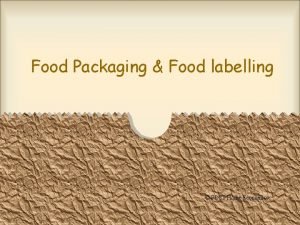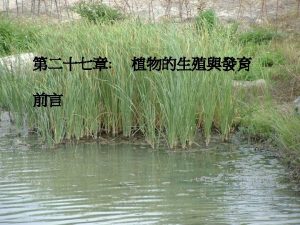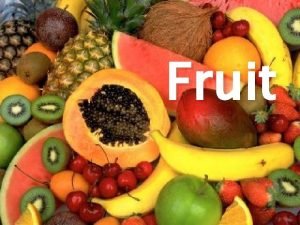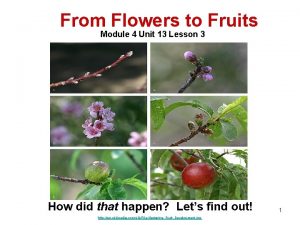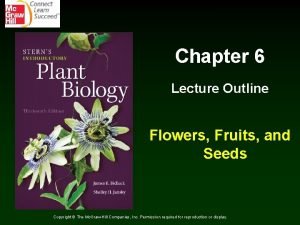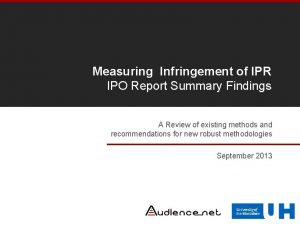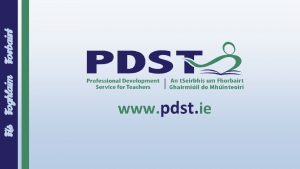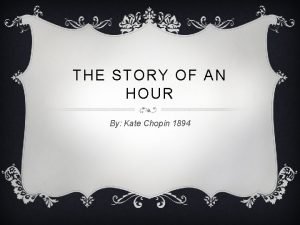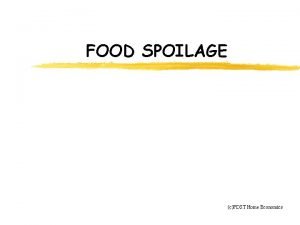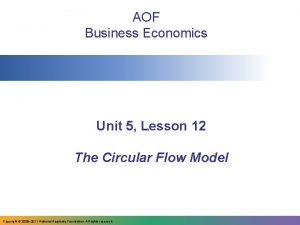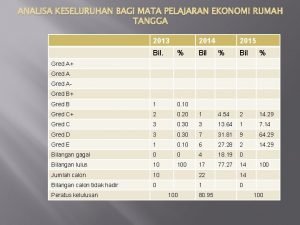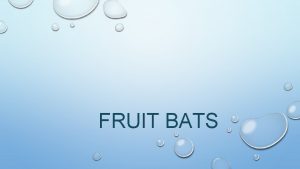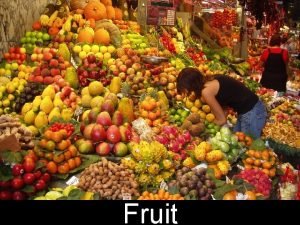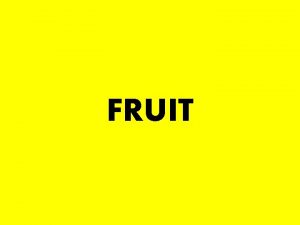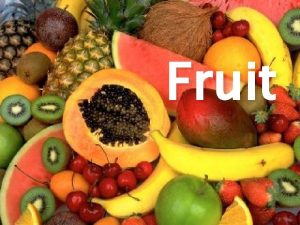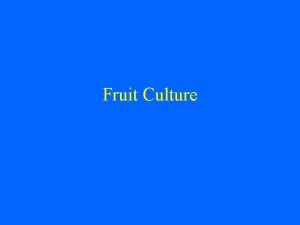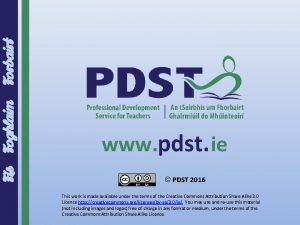Fruit and Nuts PDST Home Economics Nuts A



















- Slides: 19

Fruit and Nuts © PDST Home Economics

Nuts § A fruit of a plant that consists of a hard shell surrounding a soft kernel § Popular examples: Almonds, Brazil nuts, Cashew nuts, Coconuts, Hazelnuts, Pecans, Pistachio nuts, Peanuts (ground nuts/ monkey nuts), Walnuts

Nuts

Nutritive Value of Nuts § Protein: Good source of LBV protein § Fat: High in polyunsaturated fats therefore high in calories § Carbohydrates: Good source cellulose especially peanuts & hazelnuts § Vitamins: Small amount vitamins B § Minerals: Contain Iron and Calcium § Water: Low about 5%

% Composition of 100 g of Peanuts Protein: 28. 1% Fat: 49% Carbohydrates: 8. 6% fibre Vitamins: B 1 (0. 23 mg), B 2 (0. 10 mg), Niacin (20 mg) Minerals: Calcium (61 mg, RDA 800 mg), (Iron 2 mg, RDA 10 mg) § Water: 5% § Kilocalories per 100 g: 586 § § §

Dietetic Value of Nuts § Can function as a source of protein in a main course vegan dish § Add texture & variety to meals § Can be used in sweet & savoury dishes § Keep well, easy to store § Available whole, flaked, chopped, ground § High in calories must be restricted in low calorie diets § Some people are allergic to nuts and must avoid them

Uses in Cookery § Vegan main course e. g. nut loaf or vegetable and nut stir fry § Ingredient in many biscuits, cakes, sweets, desserts e. g. pear & almond tart § Used in salads to add protein, fat, texture e. g. waldorf salad § Toppings sprinkled on desserts e. g. flaked almonds on top of strudle. § Healthy snack or part of packed lunch e. g. cashew nuts § Almond paste (marzipan) icing on cakes or used for sweets

Fruits § Eaten for vitamins especially vitamin C, minerals, antioxidants, fibre, water, colour, flavour texture

Classification of Fruit Citrus Lemons Oranges Limes Grapefruit Hard fruit Stone fruit Berries Other Plums Apricot Peaches Nectarines Cherries Mango **Avocados **Olives Banana Pineapple Grapes Figs Dates Kiwi Rhubarb Blackberries Strawberries Blueberries Raspberries Gooseberries Blackcurrants

Average Composition of Fresh Fruit Protein 0. 5% Fat 0% Carbo. Vitamins Minerals Water hydrates 5 -10% A, C Calcium 80 -90% Iron

Nutritive Value of Fruit § Protein: Fruit lacks protein. § Fat: Fruit lacks fat except for avocados and olives. § Carbohydrates: Sugar is in all fruit in the form of sucrose, glucose and fructose. Starch is found in underripe fruit. Pectin is found in ripe fruit cell walls Cellulose (fibre) is found in the cell walls also especially pears, apples, oranges, melons. § Vitamins: All fruit has vitamin C especially blackcurrants, strawberries, citrus and kiwi. Yellow/orange/red fruit has beta carotene (pro vitamin A). § Minerals: Small amount iron and calcium. Bananas good for Potassium. § Water: All fruit has high water content.

Dietetic Value of Fruit § Add greatly to the variety of colours, flavours and textures in the diet. § Useful in low calorie diets, low cholesterol and high fibre diets because high in water & fibre and low in fat. § Anti-oxidants vitamin C and beta carotene help prevent heart disease, cancer etc. . § Can be eaten raw or cooked in a wide variety of sweet and savoury dishes. § Healthy snack, cheap and needs no preparation except washing and perhaps peeling.

Buying & Storing Fruit Buying § In season § Usable amount § Good quality, ripe § Avoid pre-packed § Firm, good colour, no discolouration or mould Storing § Cool, dark, ventilated place. § Use quickly § Remove packaging § Remove spoiled or damaged fruit

Preparing and effects of cooking Preparing. § Wash to remove chemicals § Eat raw when possible § Don’t peel or peel thinly § Avoid steeping in water § Use sharp stainless steel knife Effects of Cooking § Vitamin C destroyed § Minerals and vitamins dissolve into coking liquid § Cellulose & texture softens § Microbes killed § Enzymes destroyed § Absorb water and swell § Over cooking causes loss of colour, texture flavour

Ripening of Fruit Ripening begins during growth and continues after harvesting § Unripe fruit is less palatable than ripe Changes that happen during ripening: 1. Enzymes change starch to sugar making fruit sweet and juicy 2. Insoluble pectose changes to soluble pectin 3. Ethylene gas that helps ripening is made in some fruit (bananas) 4. Fruit changes colour, texture and flavour §

Decaying of Fruit § § Once ripe, fruit only stays good for a while, then it decays Softer fruit with thin skin e. g. grapes, decay faster than hard fruit with tougher skin e. g. pears Changes during decay: 1. Water loss and shrinkage 2. Bruises & soft spots develop 3. Enzymes and microbes attack the fruit 4. Juices released onto surface make mould and yeast grow, these rot the fruit

Processing Fruit Method Suitable Fruit Effects Freezing Berries Apples Rhubarb Enzymes & microbes inactivated Texture changes – ice crystals Not much change to food value, colour, texture Canning Pears Peaches Mandarines Pineapple Change in colour flavour texture Loss of vitamin C Enzymes & microbes destroyed If canned in syrup, higher in sugar and calories Dehydration Raisins Prunes Figs Currents Loss of water and vitamins Enzymes and microbes destroyed Texture, colour and taste changes Higher in sugar due to less water Irradiation Dried fruit not allowed in Rhubarb EU Microbes and enzymes destroyed Prevents sprouting and decay Resembles fresh fruit, some vit loss

Organic Produce § Grown without use of chemical fertilisers or pesticides or preservatives § In Ireland 320 organic fruit & vegetable growers § Increase demand due to awareness of dangers of overuse of chemicals § Organic farming less intensive and must comply with rules on fertilisers, pest, weed and disease control § Organic certificate can only be got from 3 agencies recognise by Dept of Agriculture: 1. The Irish Organic farmers and growers association. 2. Organic Trust Ltd. 3. Demeter Standards (Biodynamic Agriculture Association) § Organic products will carry the symbol of one of these associations § Because organic farming is more labour intensive and has lower yields products are more expensive

Symbols of Organic Certification Organisations
 Pdst home economics
Pdst home economics Pdst home economics
Pdst home economics Pdst home economics
Pdst home economics Simple fruit aggregate fruit multiple fruit
Simple fruit aggregate fruit multiple fruit Pdst economics
Pdst economics She said that, home economics stands for the ideal home.
She said that, home economics stands for the ideal home. Multiple fruit vs aggregate fruit
Multiple fruit vs aggregate fruit Fruit form
Fruit form Lecture about flowers
Lecture about flowers Report writing pdst
Report writing pdst Ciara o'donnell pdst
Ciara o'donnell pdst Pdst ipo
Pdst ipo Pdst lcvp portfolio
Pdst lcvp portfolio Www.pdst.ie
Www.pdst.ie Maastricht university school of business and economics
Maastricht university school of business and economics Mathematical economics vs non mathematical economics
Mathematical economics vs non mathematical economics Why does richards rush to tell mrs. mallard the news
Why does richards rush to tell mrs. mallard the news Cpdst
Cpdst Economics unit 5 lesson 3
Economics unit 5 lesson 3 Home economics subjects
Home economics subjects

